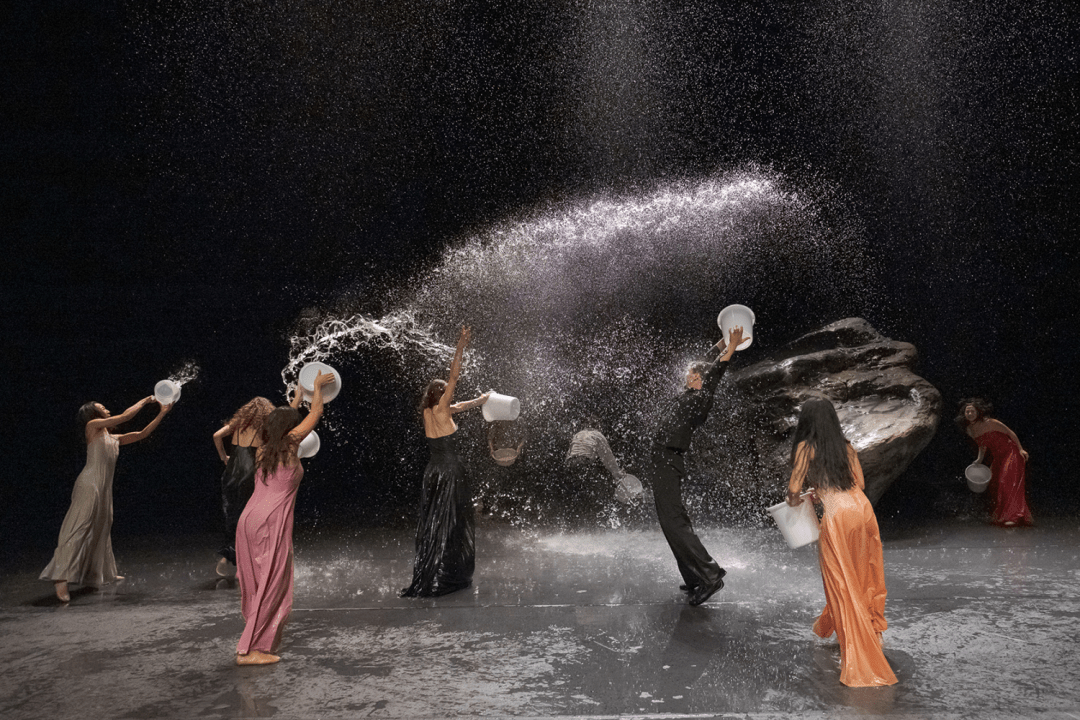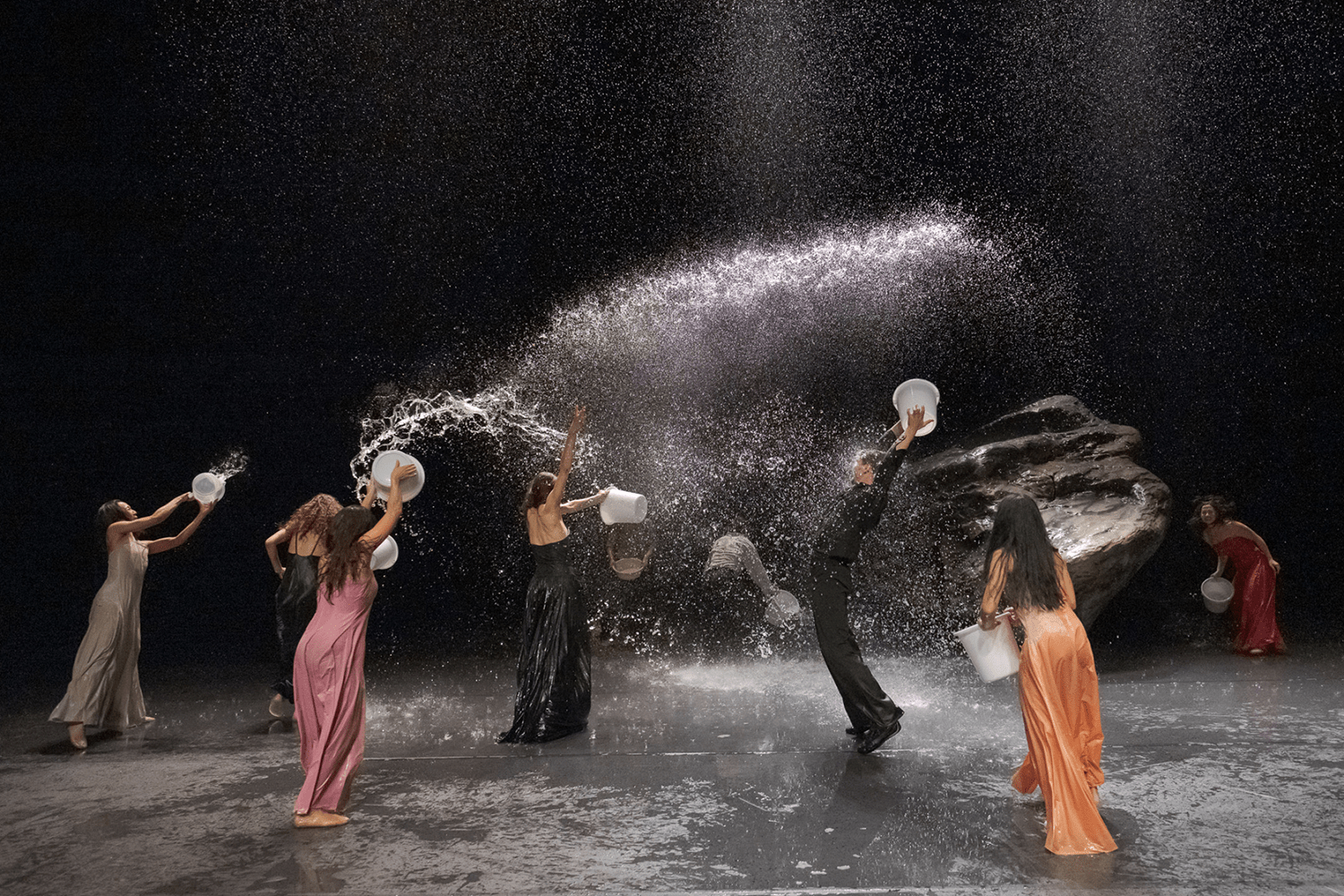
My patience with the cult of Pina Bausch is wearing paper thin. She was taken from us 16 years ago, and I had hoped that the aura of divinity around her memory might now be fading. But no, it only burgeons and having joined with Terrain Boris Charmatz to honour her creations, the official keepers of her flame Tanztheater Wuppertal are back in town to present one of her later works, Vollmond (‘Full Moon’), to ecstatic standing room-only congregations in her temple at Sadler’s Wells. What a bad, bad influence the Blessed Pina has had on dance, providing inspiration for hundreds of her imitators to pull the wool over our eyes by peddling their own pallid versions of her formulas.
With an intolerable duration of well over two hours, Vollmond contains many of her familiar tropes, and then some: a set consisting solely of a large, immovable stone boulder against a black background; downpours of rain cascading from the flies forming a shallow pool in which the cast frolic, splash and slide; outbursts of frenzied emotion and nonsensical spoken monologues lacking what T.S. Eliot described as an ‘objective correlative’ or reasoned connection to anything else; tediously repetitive rituals that involve odd noises or pointless rules; men running at great speed across the stage into the wings, women floating about in ballgowns and stilettos; a lot of panic, a lot of robotic parading, a lot of discarding of clothes. No relationships or continuities are established; the principle seems to have been to give rein to the first thing that comes into the performers’ heads, a surrender to instinct and the unconscious.
The programme further suggests that what is intended is a meditation on the manifold role of water in our lives (but nobody drowns, and mercifully urination does not feature). It struck me as merely a succession of random vignettes, most of them the stuff of an infants’ school playground and some of them even sillier, accompanied by a hodgepodge of recorded music. Tragically, a great deal of time and effort has gone into the staging of this tripe: I am full of admiration for the cast of a dozen or so, who perform these inane antics with total commitment and split-second timing worthy of the circus ring. But please don’t bandy around that word ‘genius’.
What a bad, bad influence the Blessed Pina has had on dance
Among the several activities of the admirably entrepreneurial Carlos Acosta – still occasionally performing at the balletically venerable age of 51 as well as running the beleaguered Birmingham Royal Ballet and a new dance centre in Woolwich – is the artistic directorship of Acosta Danza, a troupe drawn from his native Cuba and focused on contemporary work of a generally Hispanic nature. It seems to be establishing itself as a regular feature of the British scene, and has been appearing for a brief season at the Linbury Theatre.
The programme, entitled Folclor, may have been a curate’s egg, but there can be no question of the electrifying excellence of its dancers. Cubans aren’t overly concerned with precision or nuance – they move with a thrilling lack of inhibition that looks spontaneous and almost dangerous in its impetuousness. They are ready for challenges bigger than those they faced here. Pontus Lidberg’s Paysage, soudain, la nuit is an anodyne pastoral, relentlessly cheerful and tiresomely bland; in contrast, Norge Cedeno and Thais Suarez’s chaotic Hybrid was full of arcane symbolic pretensions drawn from the myth of Sisyphus and his vain efforts to roll a boulder uphill. What hit hardest, however, was Rafael Bonachela’s Soledad, a steamily erotic duet charting the brutal end of an abusive relationship through a complex of emotions supercharged by the impassioned dancing of Laura Rodriguez and Raul Reinoso.






Comments